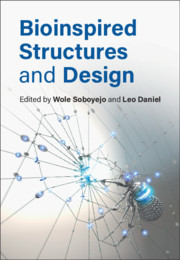Book contents
- Bioinspired Structures and Design
- Bioinspired Structures and Design
- Copyright page
- Contents
- Contributors
- Preface
- Part I Materials
- Part II Structures
- 5 Bioinspired Underwater Propulsors
- 6 Bioinspired Design of Dental Functionally Graded Multilayer Structures
- 7 Bionic Organs
- 8 Bioinspired Design for Energy Storage Devices
- 9 Bioinspired Design of Nanostructures
- Part III Natural Phenomena
- Index
- References
7 - Bionic Organs
from Part II - Structures
Published online by Cambridge University Press: 28 August 2020
- Bioinspired Structures and Design
- Bioinspired Structures and Design
- Copyright page
- Contents
- Contributors
- Preface
- Part I Materials
- Part II Structures
- 5 Bioinspired Underwater Propulsors
- 6 Bioinspired Design of Dental Functionally Graded Multilayer Structures
- 7 Bionic Organs
- 8 Bioinspired Design for Energy Storage Devices
- 9 Bioinspired Design of Nanostructures
- Part III Natural Phenomena
- Index
- References
Summary
Defined as the interface of biology and electronics, “bionics” is the science of integrating electronic devices with biological systems to construct hybrid systems that can restore the full functionality of an impaired biological organ or provide additional features and augmented capabilities (Figure 7.1). Indeed, the main goal of designing bionic organs is to restore the original functionality or replace the anatomical defects with enhanced abilities, such that the resulted hybrid would be able to assist humans in highly complex or hazardous tasks. Despite common artificial organs with merely mechanical and electronic elements, bionic organs consist of both mechanical and cellular components coupled in order to regenerate organ architecture and function, and tissue regrowth [1].
- Type
- Chapter
- Information
- Bioinspired Structures and Design , pp. 167 - 192Publisher: Cambridge University PressPrint publication year: 2020
References
- 1
- Cited by



